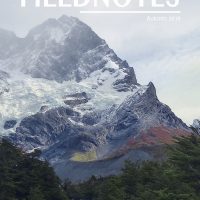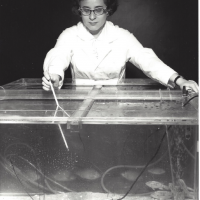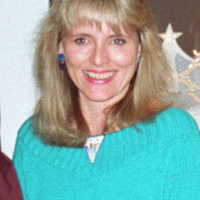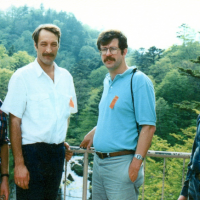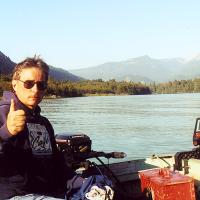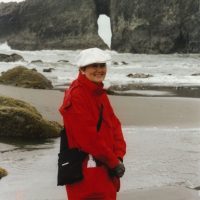Filter Results
Space travel requires more carbon than expected
Long-term life-support in space requires renewable sources of oxygen and food that can survive and thrive in a closed system without any external inputs. In a closed-system experiment, three species of green algae were added to a nutrient mixture together with a grazer species, the common water flea (Daphnia magna). Despite calculations of the appropriate level of carbon and nitrogen needed in the mixture, the pH in the closed system rapidly increased to become highly alkaline (pH 10-11), so much so that most forms of life would not be able to survive.
Read moreAn Interview with FieldNotes
Centennial Story 55: Frieda B. Taub (staff, faculty, emerita): 1959–present
Although I am not an “alum” in the sense of having been a matriculated student at Fisheries, my time at UW has nevertheless been a major learning experience!
Read moreCommon pathways in fisheries management
Managing fisheries usually follows one of three pathways: limiting catches, limiting fishing effort, or limiting where fishing can take place. In a new review, each of these pathways is explored to examine their biological, social and economic implications. Limiting catches includes guideline harvests, strict limits on the total catch, allocations to groups, division of the total catch among individual participants, and fully transferable individual rights to catch a portion of the total allowable catch.
Read moreCentennial Story 54: Cheryll (Sorensen) Root (Administrative Assistant to the Director, 1982–1996)
Getting to know the graduate students was an added benefit, and a number of them are still friends today. And last, but not least, I had the pleasure of working with some wonderful hard-working and dedicated staff who helped make the School hum. The staff worked hard, but we had a lot of fun too!
Read moreCentennial Story 53: Bill Karp (MS, 1975; PhD, 1982)
I grew up in England and was fortunate enough to be awarded a six-month internship at the Fisheries Laboratory in Lowestoft while an undergraduate. This was in 1971 when David Cushing was still the Director, and many famous fisheries scientists walked the halls, including Roy Harden Jones and John Pope. I participated in a juvenile fish survey aboard a small research vessel, which involved sampling along the south coast of England. We tied up in a different port each night and went ashore to sample the local beer. I liked the idea of doing this kind of work for a living!
Read moreCentennial Story 52: Marcus Duke (Editor/Computer Geek/Musician and 30+ year Staff Veteran)
I started working at SAFS (then the School of Fisheries) in 1979, seeking more stable income than the music profession afforded me. I was hired to do word processing—transcribing hand-written publications to digital files on 5-1/4” floppy disks (huh?!?) on a big, hulking, black machine that would shut down and wipe out the data if I looked at it askance; once, it even caught on fire. That wasn’t the only hazard: one time an intense storm literally blew the window to my office right off its hinges. Less dangerous, but more noxious, were the fumes coming from the basement when the food science crew were conducting their experiments. I remained undeterred by these minor hazards, as I soon came to realize SAFS was a great place to work.
Read moreCentennial Story 51: Jeff Cordell (MS, 1986; Staff, 1977 – present)
It is a fitting time to write something about my time at SAFS because it has been forty-two years almost to the day since I started working at what was then called the School of Fisheries (hereafter I’ll refer to it as SAFS). I was hired by Charles “Si” Simenstad in October 1977 and started at the Big Beef Creek research station, sorting out and identifying salmon diets and invertebrate samples, part of impact studies of the new Trident submarine base on Hood Canal.
Read moreRise in water temperature will lead to earlier salmon hatch dates
Water temperatures affect the length of salmon incubation, including the periods between spawning and hatching, and between hatching and the emergence of free-swimming fry. In Bristol Bay, Alaska, lake temperatures are predicted to increase by 0.7-1.4°C from 2015 to 2099 at the time of the year when incubation occurs, due to the effect of human emissions of greenhouse gases. As a result, sockeye salmon in Alaska will start hatching 16 to 30 days earlier than at present, according to a new model that examined the effects of climate change on 25 populations of sockeye salmon in four Alaskan lakes.
Read moreCentennial Story 49: Loveday Conquest, Faculty, 1978 – 2014 (Emeritus, 2014 – present)
I was fortunate to be in elementary school when the Soviets sent up the Sputnik satellite in October, 1957. This galvanized the United States government, in addition to ramping up the US space program, to launch a variety of “new math” programs for students, including female students, a rather bold move in those days. Female students who were identified as having mathematical abilities were encouraged to pursue mathematics and other STEM fields, even without the legal backing of Title IX (which did not come into being until the 1970s).
Read more